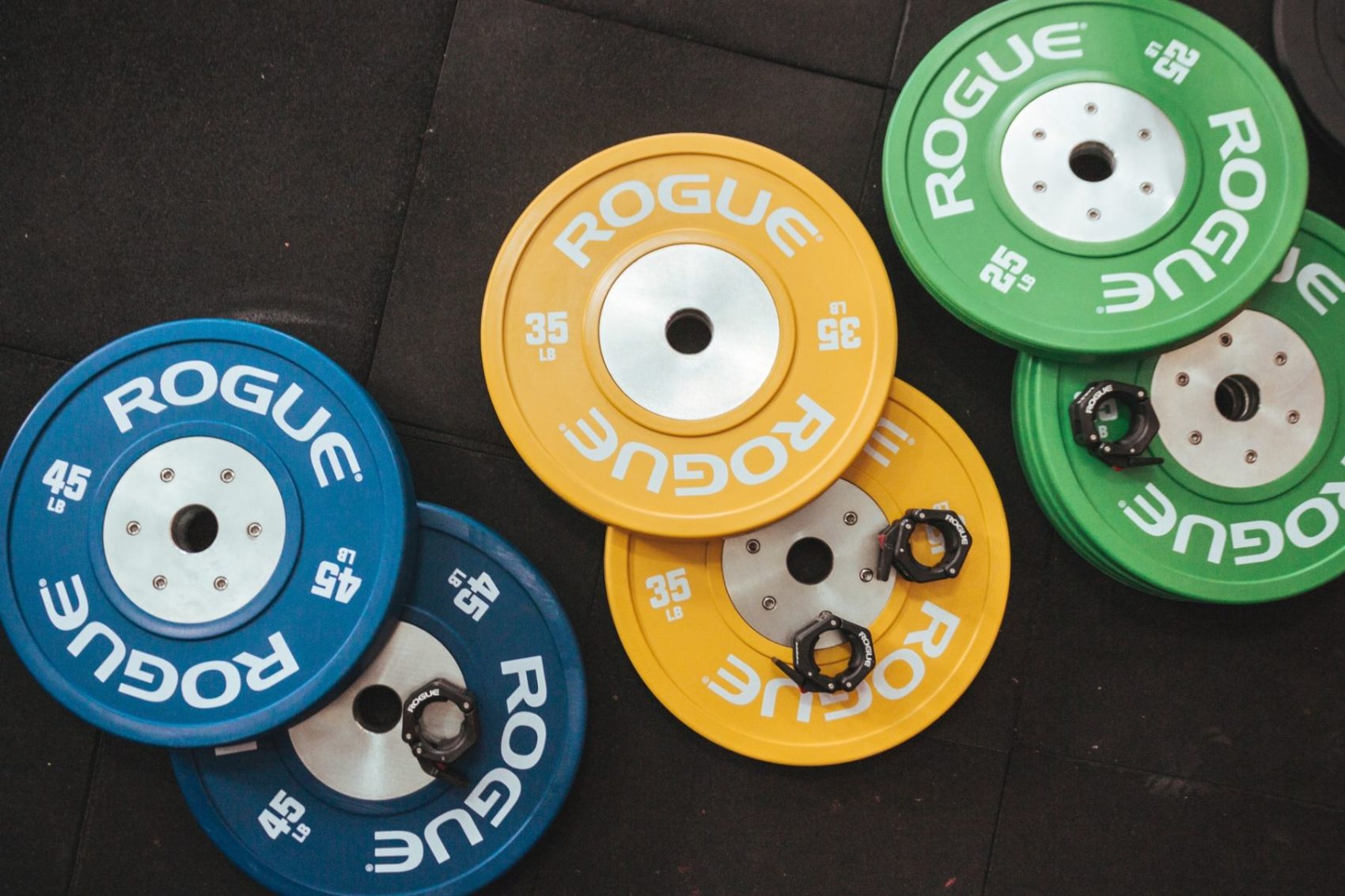After the more theoretical previous two parts about programming – let’s get practical right now with this gem and try to write yourself your very own perfect workout program!
After reading the two previous posts you should have now the basic knowledge you need about writing a calisthenics program. Although focussed on calisthenics you can use this checklist, too, to build a conventional strength training program.
I try to keep everything as short as possible. If anything is unclear, check out the two previous posts or shoot me a comment. They should act as a knowledge library and this post is the more practical blueprint.
Work through these 8 points one at a time and you should be able to write your own workout program. Be sure to share your opus magnum with me!
OK – let’s have some fun and get right into it! 😉
How to: Write your own Workout Program (Lego-Style)
Likewise, the colorful plastic building blocks, in this approach there are many separate parts coming together. One alone might not seem that useful but combined they create something complete.
Like when trying to build Lego star destroyers. You get a package of half a million blocks. Over the course of the next week you will set one brick onto the other one at a time. Sometimes you will wanna smash that thing, other times you question if some parts are missing.1
But in the end, 100 cups of coffee later, you got it. Proudly you put it in some closet and forget about it.2
Step I: Setting Goals and Laying the Foundation
- What is it you wanna accomplish within your training?
- Why are you training? Why?
- What is it you wanna learn? Are there skills you wanna learn?
Ì could list here over 100 great questions – but many of them Start with WHY*.
Be precise in your thoughts and write them down. Structure them and organize them in order of importance, as well as some kind of rough timeframe.
These goals are the foundation of everything that follows. Plus, when you wanna switch the program or the outside noise of fancy exercises and stuff that creeps into your head – a look at your goals can clarify what you really need to do.
That said – spend some thoughts here!
Step II: Frequency
- How often do you wanna work out per week?
- How long have you time to work out per session?
- How long can you work out per session properly?
- Can you manage to realize that timeframe week in and out?
Determine a number – for example 6 times a week for 90 minutes per session.3
Step III: Principles
There are many principles to structure your workouts after – you can get active by yourself and chaff the wheat or stay with one of my favorites.
I made great progress with all of these three principles and can wholeheartedly recommend them to anyone interested.
Alternatively you can find many more splits in Reddit’s great Bodyweighttraining-Community.
Push/Pull/Legs:
A great split for beginners and advanced athletes alike.
The major point of this split are that it is highly versatile and you go totally rested into every session. There is a P/P/L split for nearly anyone 😀
To learn more about this split in detail feel free to read my post about it.
Bent Arm and Straight Arm:
In this split you organize the exercises in exercises done while bending arms and exercises done with straight arms. Feel free to throw a leg session within the mix.
This split can quickly lead to doing too much and not recovering well, especially when not used to that volume. That’s why I would it recommend for more experienced athletes – despite straight arm conditioning isn’t the best a beginner should start with.
To learn more about this split in detail feel free to read my post about it.
Upper/Lower Body
The upper/lower split is also a great one for beginners, as well as more advanced athletes. It can be trained more frequently and you have the chance to hit every movement more often.
Plus, it is more focussed on your legs than the previous two. If that’s something you like to work on – especially as a beginner to have plenty of time learning all the exercises – go for it!
Step IV: Exercise Selection
OK: Goals are set, your workout days are chiseled in stone and you’ve fallen in love with an awesome principle.
So far so good – now you choose the right exercises which shall accompany your path to greatness.
Step IVa: Skilltraining
Choose 2 skills you wanna work on. Now choose a timeframe of 10-20 minutes to work on these two skills or even combination of skills. Or go for sets – nothing is wrong or right here!
The most important point to consider that the thing you are working on is truly a skill and doesn’t force you to exhaust yourself.
You can find many cool skills to work towards at the Floreiro Projekt by no one else than Ido Portal.
Step IVb: Conditioning
Choose 4-5 exercises and perform each for 3-5 sets.
The total volume you choose depends strongly on your goals, the particular exercise, and what you are used to.
I would try to train in every rep range somewhere, but do the bulk of your reps in the 8-12 rep range. Try to train progressive – don’t go all out on day 1 of week 1. Instead, build volume slowly up.
You should choose exercises covering all of these movement patterns:
- Vertical Push (Dips/Handstandpushups/…)
- Horizontal Push (Pushups/Planche/…)
- Verticale Pull (Pullups/Chinups/..)
- Horizontal Pull (Rows)
- Squat (Squats/Jumps)
- Hinge (Deadlifts)
As a rough guideline I would choose two vertical and two horizontal pushing exercises for your push session.4
The harder and more skill focussed exercises should be trained in a lower rep range. The easier and more strength focussed exercises should be trained in a higher rep range.
Now you got 4 exercises per workout. Add one more or stay with them.
To plan your pull session do the same as described above.
For your legs you could squat heavy in one session and deadlift heavy the other if training your legs twice is an option.5 Supplement the main lifts with additional exercises as easier squats and deadlifts, jump or isolation exercises.
Step V: Warmup and Cooldown
A good warmup is very important to stay injury-free and perform well.
You can find my two cents on warming up your upper and lower body here.
A cooldown should wind you down and transition you well over into recovery mode.
Step VI: Did someone say Mobility?
Do some Mobility after every workout if one of your goals is to get more mobile in specific positions – for example, to be able to touch the floor.
The important point is specific work. Stretching everything halfheartedly won’t get you far.
Work on your targeted goals for 15-20 minutes after every workout. Then you are warm and limber. I would choose around 3 exercises to improve your desired outcome.
Your workout should look now something like that and take around 70-120 minutes:
Warmup (10min) – Skills (10-20min) – Conditioning (30-60min) – Mobility (10-20min) – Cooldown (5-10min)
Step VII: A little cardio as side dish?
I would advise everyone to do 2 times a week cardio training. A strong heart is the prerogative for getting old healthy. I would even say it is even more important than strength.
OK – I see that after 90-120 minutes of strength work cardio doesn’t sound that convincing. My advice would be to do cardio at the morning on off-days. It doesn’t have to be much. 30-60 minutes two times a week go a long way.
And I am sure you can find at least one sort of cardio which you enjoy!
Step VIII: Voilà, here we got your perfect Workout Program!

Congrats for working through that!
You managed to write a professional workout program and spend lots of thoughts on that. You wrote your OWN plan.
I hope you enjoy the outcome and are full of joy to try it out. I would like to see your outcome, too!
Share it with me in the vast world of the comments. I strongly believe that experiencing different viewpoints and approaches to problems can bring everyone further than on his own.
If this whole series helped you at least a bit to see a bit more clearly through the misty way of writing a program – than my job is done here. 🙂
As I started I always wished for such a blueprint. To work through, answer questions and block out most of the outside world’s noise.
I wish you all the best results with your very own program,

Footnotes
- Spoiler – in 99% of the cases it is your disability to find them. I was at this desperate point often…
- That’s what at least happened to most lego stuff in my childhood. Building was the fun part! Playing with these sharp hard things was more or less uncool.
- 3 times a week for 60 minutes is totally fine, too. :-D
- Rules are great. Sometimes just to know how to break them. This is legit from time to time, too!
- Otherwise – you could squat heavy and deadlift heavy one day. Happy suffering!



